![]() – Corresponds to location on map
– Corresponds to location on map
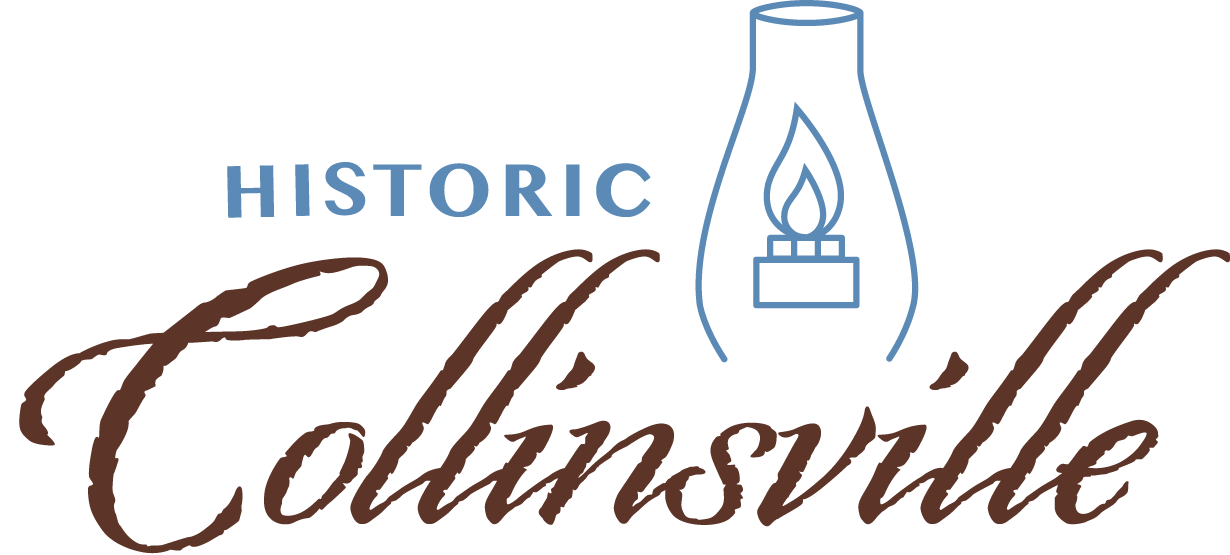



![]() – Corresponds to location on map
– Corresponds to location on map
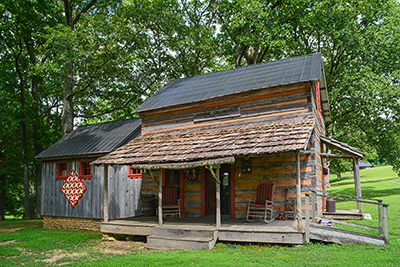
 1
1
Built in the 1830s near its present-day location, this cabin was once the two-room home of James Newton and Savannah Tennessee Jones Weakley, grandparents of Historic Collinsville founder Glenn Harris Weakley. Among with other original features are the cabin’s wooden floors and walls, a section of wallpaper and insulation, and a portion of the chinking. Glenn and his wife JoAnn established Historic Collinsville in 1974, opening to the public in 1997.
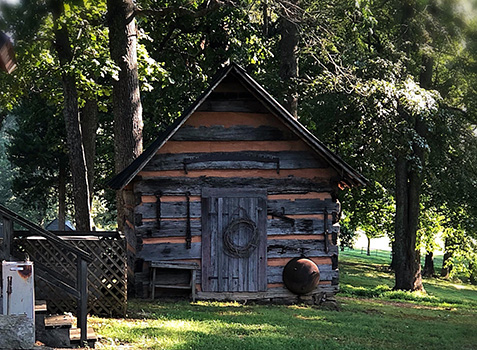
 2
2
The smokehouse behind the Visitor Center was built in 1803 and belonged to two of Tennessee’s early settlers, Samuel D. Weakley Sr. and his wife, Sarah Vaughn Weakley. The structure sat on their land in Nashville, Tennessee until 1998 when it was damaged by a tornado. At that time, it was moved to Historic Collinsville and reassembled at the settlement. Samuel Weakley was a respected citizen and land surveyor who surveyed much of Nashville and Clarksville. He died in 1832 in Montgomery County while surveying land in Palmyra. It is said that Samuel was friends with President Andrew Jackson, and they visited each other at the smokehouse.
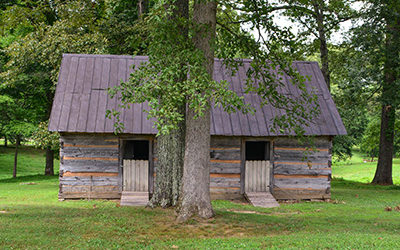
 3
3
The Irby-Bumpus Wildlife Center was originally a two-room Montgomery County home in the Salem Community, located less than 10 miles from where the cabin sits today. A fireplace once divided and served both rooms of the structure. The animals and Native American artifacts in the center represent resources used by people in the 1800s for needs such as food, clothing, and tools. While most of the animals in the cabin are native to Tennessee, some are from other areas where Historic Collinsville’s founders Glenn and JoAnne Weakley traveled to hunt. Both Glenn and JoAnne were avid hunters and contributed to the animal collection in the wildlife center.
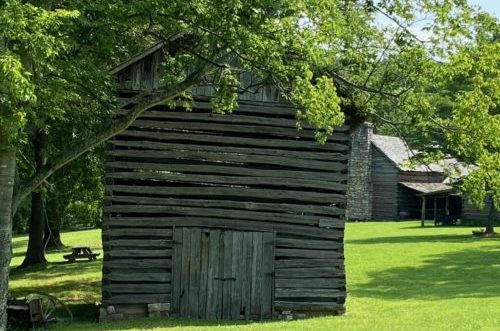
 4
4
The tobacco barn is made of chestnut wood, which is lightweight, strong, sturdy, and highly resistant to decay. The chestnut tobacco barn came to Historic Collinsville from the nearby Vertrees farm. It was used solely for air-cured burley tobacco — a cash crop that generated great wealth for 19th-Century Montgomery County. Tobacco also connected Clarksville with locations around the globe where it was exported. The air-flow openings between the logs of the barn helped cure the tobacco, which was not fire-cured at any time. Currently, the barn is used for a variety of activities and is available for event rentals.
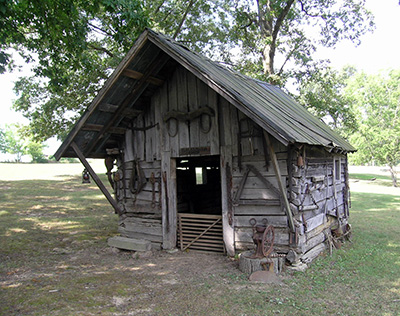
 5
5
The Blacksmith Shop is a log building from the early 1800s and original to Southside, Tennessee when the town was called Collinsville (which was only for about 8 years.) Collinsville’s name became Southside on March 25,1880. John Collins was the community blacksmith for Collinsville while his brother, Ont, ran the post office and a small general store. The shop is still used by local blacksmiths in1800s fashion from time to time. The blacksmith is a craftsman who fabricates objects out of iron by hot- and cold-pressing and hammering on an anvil. The Blacksmith had an important role in the community – he forged horseshoes, farm instruments, gates, fencing, cooking utensils and even wagon wheels, among other items.
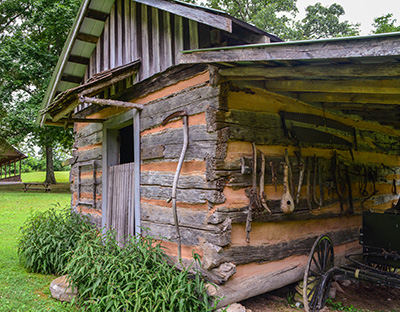
 6
6
The Wallace Loom House, donated to Historic Collinsville by Anne Wallace, came from Old Russellville Pike in the St. Bethlehem area of Montgomery County. It contains a chestnut wood loom that belonged to the Chadwick Family of Collinsville. A loom is used to weave cloth by facilitating the interweaving of threads. A loom was one of the most valued pieces of equipment in the average homestead where it was used to weave homespun yarn into cloth to make clothing and other cloth items.
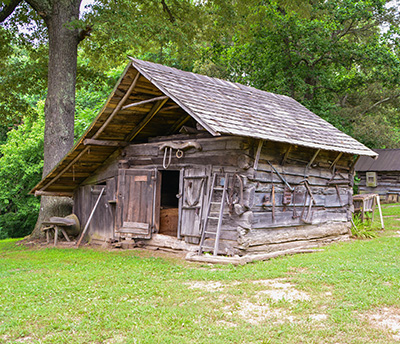
 7
7
Built by Barnabus Powers in 1842, the hand-hewn meat box is made from a single poplar tree and filled with salt to cure hogs and other meats before smoking them.
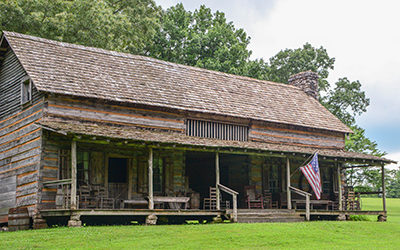
 8
8
The Batson House was moved to Historic Collinsville from a location near McAlister’s Crossroads, about five miles away. The home, which only included the parlor and room above it, was built in 1855 for Katherine Batson and her first husband, William Williams, as a wedding gift from her father. Williams died a few years after the wedding and the couple had no children. Katherine’s second husband, Samuel Roberts was killed by Civil War soldiers when he was mistaken for a military deserter. Samuel left Kitty with two sons. She married a third time to Edward Neblett. The Nebletts had many children, so additional rooms were added to the home as the family grew. Kitty lived in the home until 1916 when she died at the age of 77. Ed died a few years later, in 1919, at age 88. The house is called a Dog Trot or Double Pen House because of the two separate sides which are divided by a breezeway to help cool the rooms on hot days.
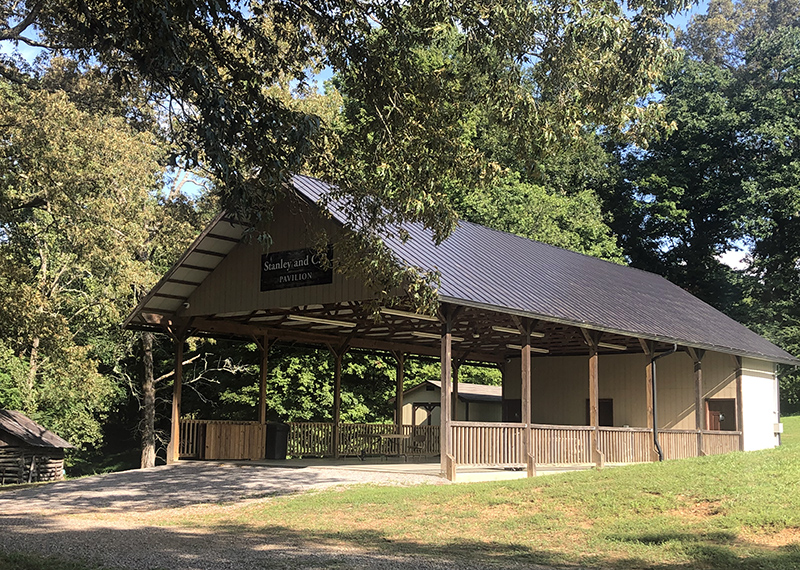
 9
9
The Stanley Leimer and CB Black Pavilion is dedicated to these two gentlemen who are responsible for helping Historic Collinsville become what it is today. One of their last undertakings was to build a pavilion to give people a shaded place to take a rest, enjoy a meal or gather for special events. The area is also equipped with restrooms and electricity.
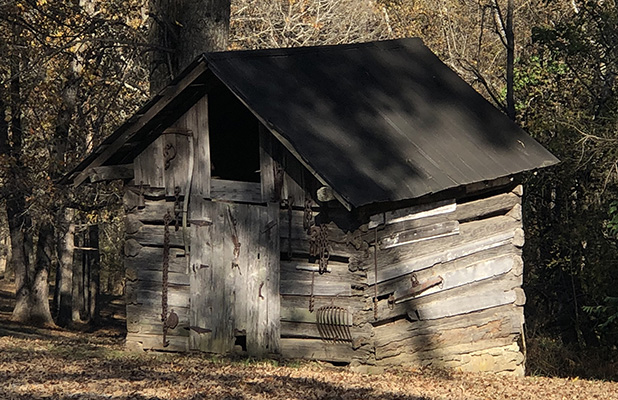
 10
10
By the 19th century, the careers of cordwainers (a shoemaker) and cobblers (someone who repairs the shoes) had merged. They would travel to rural communities and set up shop to repair local shoes in return for room and board. An unused chicken coop would make a perfect shop. Cobblers traveled with a small number of tools and share news of what was happening in the other towns while they worked on shoes. When the cobbler ran out of work, he would move on to the next town.
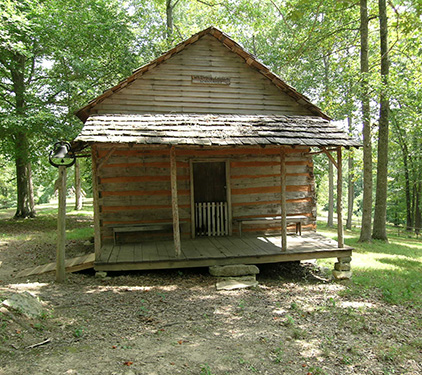
 11
11
This property was used for both worship and learning. The portable teacher’s desk is of particular interest.
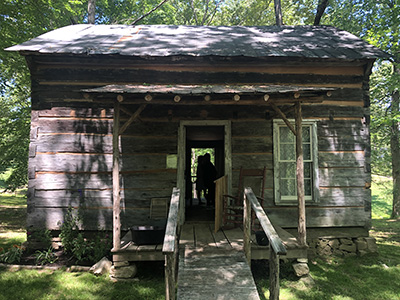
 12
12
The hand-hewn Adkins House, with some of the best notching you can find, was built in 1838 and had two limestone rock chimneys. It belonged to Dr. Benton Adkins who was born and raised in the home. The 21-foot-wide by 16-foot-tall cabin was moved on a flatbed trailer to Historic Collinsville in 2000 from land along Highway12 in southeast Montgomery County. The home is interpreted as an early 20th Century teacher’s house — a time when some travelling educators were fortunate enough to stay in a home provided for them while they served as a teacher.
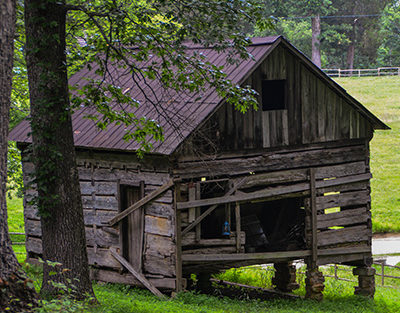
 13
13
Named because Jesse James would sleep in the yard outside of this, his friend’s home, while he and his men would travel from Missouri to Logan County, Kentucky to see his fiancé Zerelda Mimms. After a nine-year engagement and traveling to see her, they married in 1874. This 1860s home is currently under reconstruction.
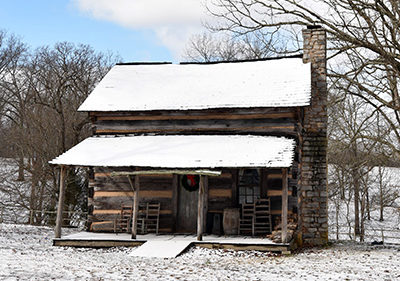
 14
14
The Lewis House was built in 1842 and Robert Peyton Lewis was born here in 1845. The home served as a family home for Mr. and Mrs. George W. Lewis and their 13 children, as well as a lookout for Union Soldiers.
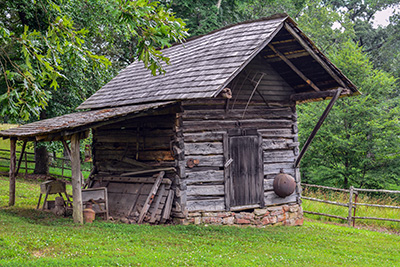
 15
15
Also built in the 1840s, the Baggett Smokehouse was used to preserve meat for the family. During the winter, hog meat was smoked to preserve it for later use.
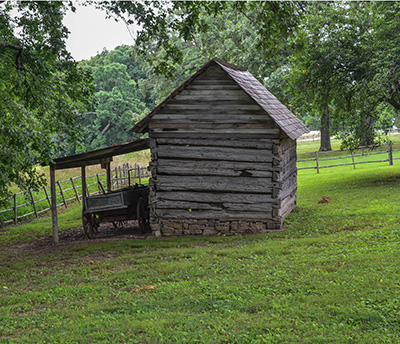
 16
16
Ear corn was stored in the corn crib for both the family and the animals. This structure was built in the 1840s.

 17
17
Built in the 1840s, this building features very large logs and extra-fine dovetail notches.
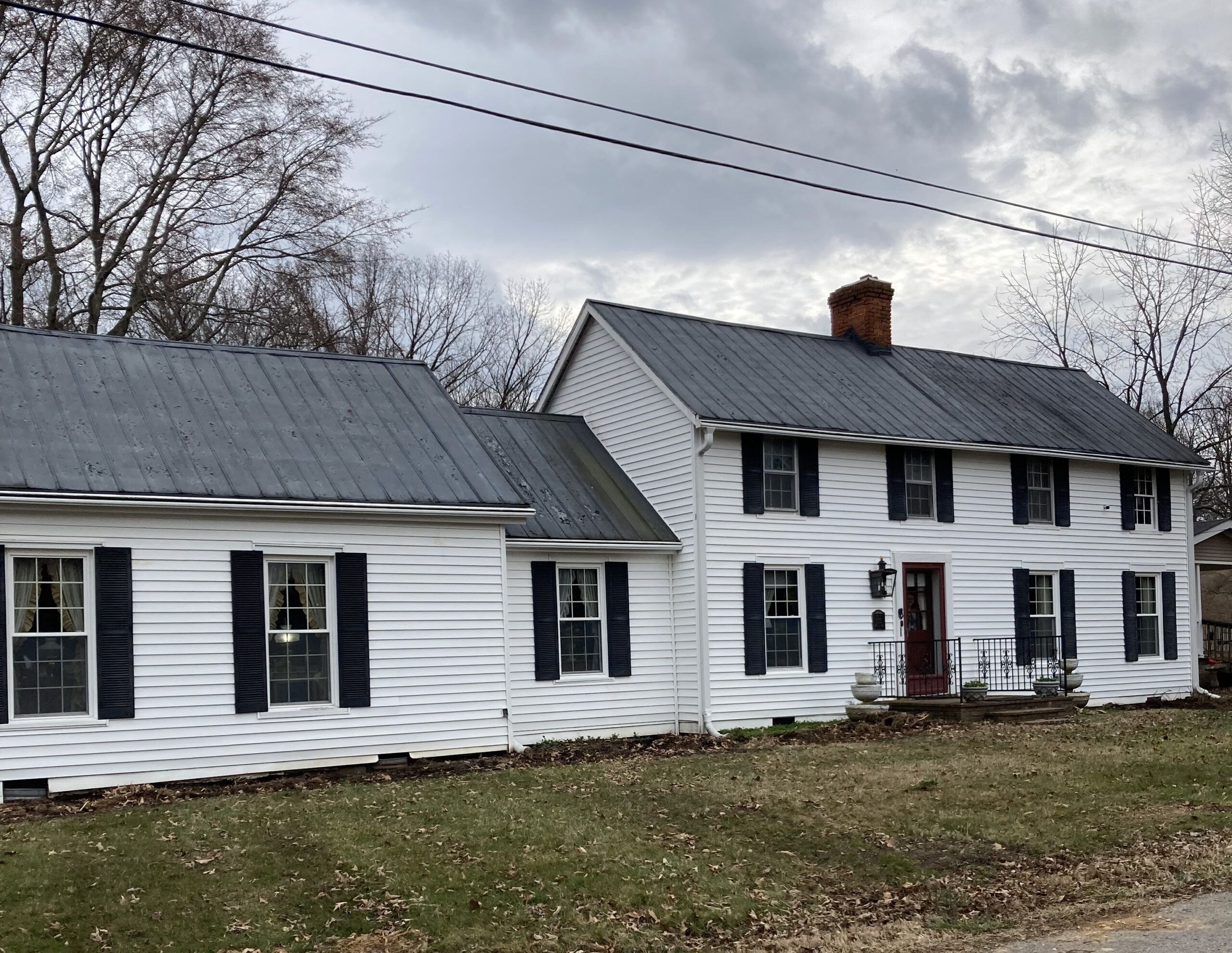
 18
18
The Weakley House Museum opened in April 2024. It was the home of Historic Collinsville founders, Glenn and JoAnn Weakley. The home’s humble beginnings date back to 1905 as a tenant house on a family farm. The Weakleys moved into the home in 1960 and began renovations that continued until the 1980s. The unique home contains the couples’ many collections and the stories that accompany them. Inside you will find items that reflect the couple’s passion